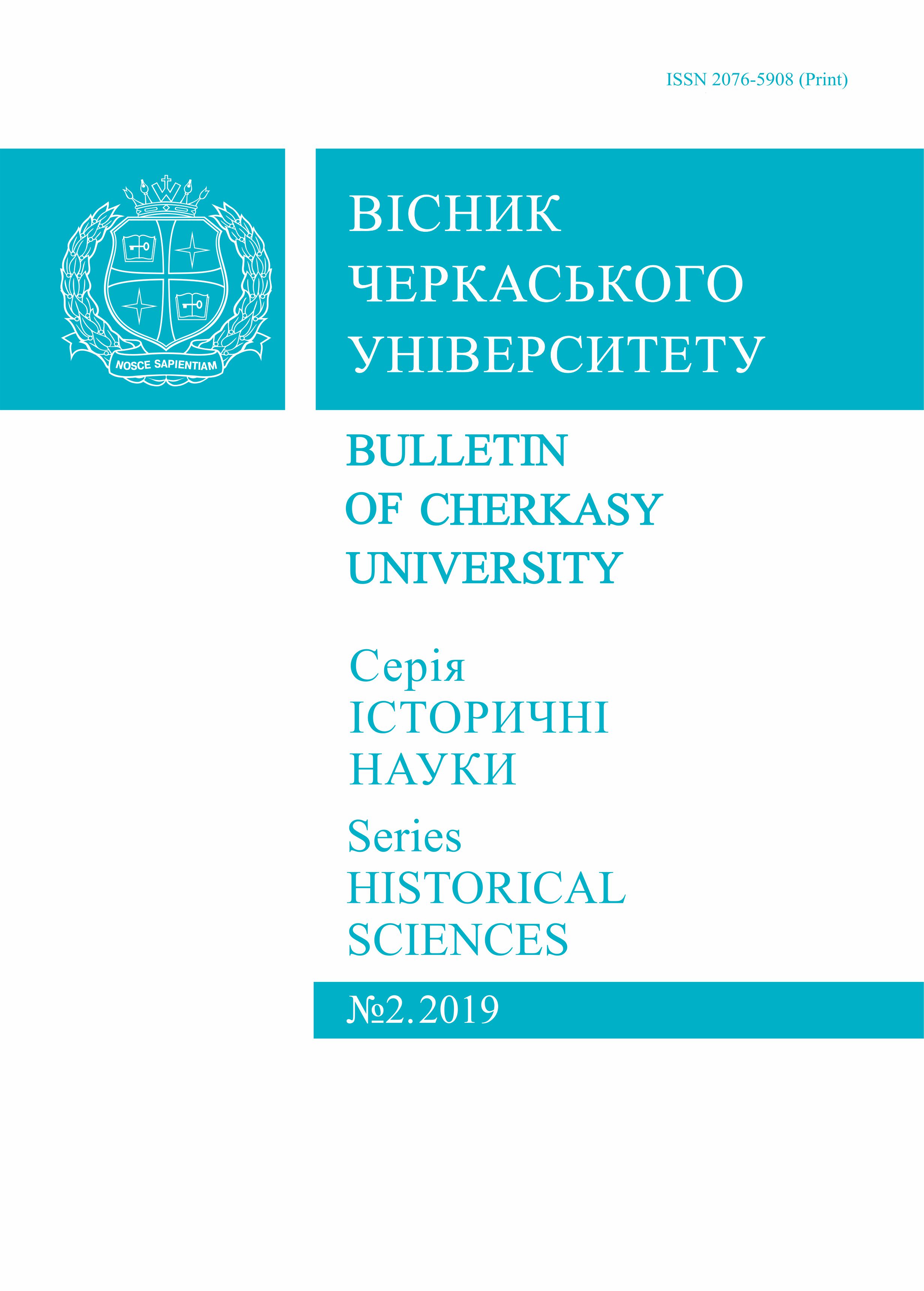The organization of Kharkiv transport system in the second half of the 19 century (The socioculture aspect)
##plugins.themes.bootstrap3.article.main##
Анотація
Introduction. The Post-reform period was a turning point in the history of the cities of the Russian Empire, in particular, Kharkiv. At this time, there is an increasing of the urban population, the phenomenon of urbanization, as well as the expansion of the city’s borders. In these conditions, a new form of relations between residents is laid, and urban culture is formed. There are coachmen among the new social categories. It has entered in urban space and also provided special connecting functions. At the same time, having become monopolists of urban transportation for a long time, the drivers ignored the decisions of the city government and they inflated the prices of transportation and speculated on the situation. Among the urban population, not all estates had an economic advantage to use such transport services. The situation changed a little after the settlement of the conditions of passenger traffic by the Municipal Council, as well as the introduction by the Belgians of the horse railway into exploitation as public transport.
Purpose. The research purpose is to determine the place and role of transport in the sociocultural life of Kharkiv. For the purposes is to determine the place and role of transport in the sociocultural life of Kharkiv. For the purposes, it should be indicated a general description of the development of Kharkiv in the certain period, to establish the key aspects of the urban transport network formation, as well as to define its role in everyday life of citizens.
Results. In the article the main factors of Kharkov development transport system are considered in the mentioned period. It is justified that the second half of the XIX century marked the rapid development of the city. The main modes of transport were determined, which were operated in Kharkiv, and also the peculiarities of its functioning are revealed in accordance with the focus on attempts to settle the city transport system by Municipal Council, transport infrastructure, as well. The role of transport in the daily life of the urban population is highlighted.
Originality. At the local level, an attempt was made to compare the citizens’ daily life with the features of movement in the context of work and leisure. The tariff policy was analyzed to assess the availability and comfort of transportation by passenger’s requests and opportunities. The place and role of public and private transport are determined in the system of socio-economic and cultural development of the city in the post-reform era.
Conclusion. Urban transport organically entered the everyday life of Kharkiv citizens, providing more or less convenient travel. It is useful to identify two main categories of participants in this process: a carrier and passengers. Among the existing categories of transport, it is necessary to define the transportation and the city horse. The conditions of transportation were excellent. Municipal Council influence on carriers increased in the last quarter of the XIX century. New ruled for the riding of the manure were issued and optimal tariffs were established. The prospect on such research is due to the transport factor in the transport factor in the sociocultural space of the city.
##plugins.themes.bootstrap3.article.details##
Посилання
Bagaley, D. I., Miller, D. P. (1993). History of the city of Kharkov for the 250 years of its existence. Khariv: Frunze factory (in Russ.)
Bozhenko A. (2018) Rails, pipes, lanterns: concessionaires and the City Duma in the creation of modern Kharkov infrastructure. Ukraine Modern. Retrieved from http://uamoderna.com/md/bozhenko (in Ukr.)
Bozhenko A. (2017). City: history, culture, society. Merchants vs nobility: the elite of Kharkov in the second half of the nineteenth century. - in the early twentieth century, 2, 39-48 (in Ukr.)
Bozhenko A. The Formation of Urban Identity of Kharkiv in the Second Half of the Nineteenth - Early Twentieth Centuries. Olena Novikova, Ulrich Schweier, Peter Hilkes. Jahrbuch der VII. International Virtual Conference of the Ukrainian “Dialog der Sprachen, Dialog der Kulturen. Die Ukraine aus globaler Sicht ”. October 27-30, 2016, Verlag readbox unipress Open Publishing LMU, 2017. pp. 710–716. (in Ukr)
Vodotika T. (2014). Regional History of Ukraine. Typology of the cities of the Dnieper Ukraine in the context of the formation of business culture in the second half of the nineteenth - early twentieth century, 8, 155-168 (in Ukr.)
Dyachenko N. (1966). Streets and squares of Kharkov. Khariv: Flag (in Russ.)
South Territory (1881, September). Meeting of the City Duma (in Russ.)
Ivchenko A. (2007). History of the Kharkov Equestrian tram from 1882 to 1919. Khariv: Flag (in Russ.)
Kolomiets T., & Yarmysh O. (2003). The Culture of Kharkov at the Turn of the Century (end of XIX - beginning of XX century). Khariv: KNUABF (in Ukr.)
Leibfreyd A., & Polyakov Y. (1998). Kharkov from the fortress to the capital: notes on the old city. Khariv: Folio (in Russ.)
Southern Territory (1893, April). Local Chronicl (in Russ.)
South Territory (1894, October). New rules for Kharkov exporters (in Russ.)
Kharkiv City Duma (1880). On the needs of Kharkiv in relation to its improvement: report of the commission. Kharkov: Typo-lithography MM Gordon (in Russ.)
Southern Territory (1909). About exporters, №69, 5 (in Russ.)
South Territory (1892). Increase in the number of car parks in some streets of the city, 40, 3 (in Russ.)
Osorgin M. (2009). Memories, or what I heard, what I saw and what I did during my life (1861-1920). Moscow: Russian Foundation for Culture (in Russ.)
Pashkov V. (1881). Southern Territory. Kharkov in the late 30’s and 40’s, 269, 1-3 (in Russ.)
State archive of Kharkiv region. F. 51 (Kharkiv Provincial Statistics Committee). Description 1. Case 165. (in Russ).
Udovenko L. (2012). Bulletin of KhNU. Leisure of Kharkov in the second half of XIX - at the beginning of XX century, 10, 70–75 (in Ukr.)

